You’ve heard the music, listened to the podcast, now you can read the book…
‘Electronically Yours Vol 1’ is the autobiography of Martyn Ware. From his synth innovation with THE HUMAN LEAGUE and HEAVEN 17 to productions for Tina Turner and Terence Trent D’Arby to ambient collaborations with Vince Clarke, it is the story of his humble working class origins in Sheffield, rise to acclaim and million selling records.
In between, there was his teenage friendship with former-bandmate Phil Oakey that led to the formation of THE HUMAN LEAGUE who were subsequently declared “the future of music” by David Bowie. After a Coup d’état that led to Ware leaving THE HUMAN LEAGUE, he formed BEF, a production company from which an umbrella project named HEAVEN 17 with singer Glenn Gregory and fellow League refugee Ian Craig Marsh became an international success, most notably with the huge hit single ‘Temptation’.
Ware achieved two No1 albums as the producer of ‘Introducing The Hardline According To Terence Trent D’Arby’ in 1987 and after HEAVEN 17 went into hiatus, the sixth ERASURE album ‘I Say I Say I Say’ in 1994. The latter link up with Andy Bell and Vince Clarke eventually led to HEAVEN 17 returning to the fold as the opening act on 1997’s ‘Cowboy’ tour and becoming a favourite on the live circuit to this very day.
‘Electronically Yours Vol 1’ also allows Ware to articulate his views as a proud socialist, something he considers to be a soulful, personal and moral duty. Anyone who considers politics and music should not mix have perhaps missed the point of his music; the themes of HEAVEN 17’s first two albums ‘Penthouse & Pavement’ and ‘The Luxury Gap’ highlighted the class divide that got only wider under the government led by Margaret Thatcher.
Martyn Ware chatted candidly with ELECTRICITYCLUB.CO.CO.UK over a game of Vintage Synth Trumps about the history of technology, how the music industry has changed over his multi-decade career and his fruitful working relationship with Vince Clarke.
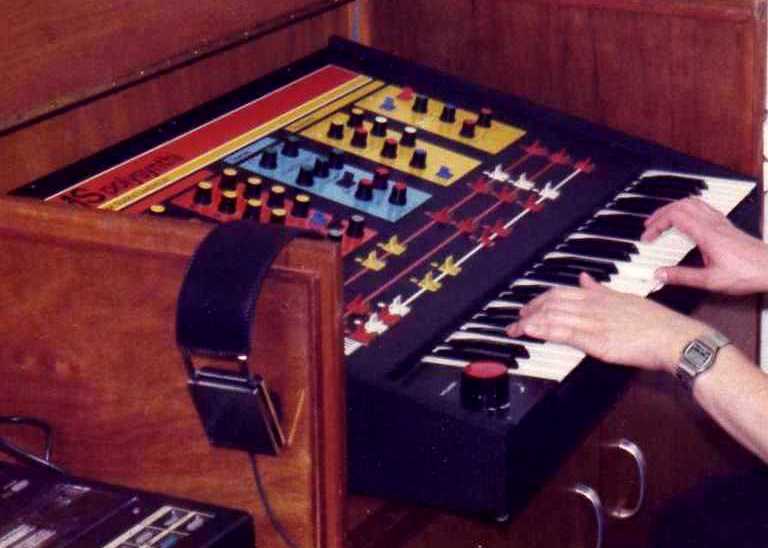
The first card is the EMS Polysynthi…
I’ve never played one of those but I’m a big fan of EMS design in general, my first band THE FUTURE featured Adi Newton who owned an EMS Synthi AKS suitcase synth. I couldn’t get any sense out of it at all but it made a fantastic racket that you couldn’t predict.
The number of people I have talked to on the ‘Electronically Yours’ podcast who have talked about EMS in fond terms, it’s the one that I covet…
The EMS Polysynthi was at our college studio and it sounded horrible… I thought it was just me but then a few years ago, Vince Clarke declared it as “the worst sounding synth ever made” *laughs*
It looks nice and colourful which is generally a good sign but how weird is that? I never saw it in his studio, maybe he didn’t have it out because he didn’t like it.
Next card is a Roland SH3a…
I had one of those! This was around 1979-80, it was a very nice synth, I liked it a lot but it wasn’t as good as the modular synths that I was more familiar with. Roland were starting to move into more mass production stuff at that point and appealing to a bigger market. They were using a lot of the same components but somehow, the filter was not as extreme so the sounds were less electro-punky like I preferred at that time. They redeemed themselves with the Jupiter 4 but it was too effete, too soft.
So did it get used on ‘Reproduction’ or ‘Travelogue’?
No, it was sort of the unloved runt of the litter. I just couldn’t get it to go far enough for my taste, it was a bit safe. I think Roland toned down the extremities of the filters to make it more usable for the average Joe.
I’m always fascinated by synths that artists don’t like, I remember Billy Currie of ULTRAVOX saying his was the Prophet T8 because it cost a fortune and was nothing like the Yamaha CS80 which he’d sold it for…
Haha! We’ve all done that! We regularly sold our old synths for whatever the latest thing was, that proved to be a massive mistake as soon as we approached the FM synthesis period which I never really got on with.
So with your book, you mentioned you started it 3 years ago, is it basically a product of lockdown?
I’d been thinking about it for a while and then lockdown happened, I thought if I don’t do it now, I’m not going to do it. I’m one of those people that HAS to be doing something. If I’d had been locked inside during lockdown like in some countries, I would have gone insane. During lockdown, there were two things that I quickly determined; one was to start this autobiography.
My daughter was living with us then so I employed her with the research as I can’t remember a lot of it as I never kept diaries. I’ve got a sketchy knowledge of stuff and remember individual incidents. So over three months, we did solid research using a spreadsheet with a timeline but after a month, this spreadsheet took up a whole wall!
It’s like getting your ducks in a row, you’ve got to have a cogent understanding of what was connected to what happened in what time order. It can become like David Niven’s ‘The Moon’s A Balloon’ which is a series of reminiscences but I didn’t want it to feel like some old bloke’s book! Although I’m an old bloke, I wanted it to feel dynamic.
So once you’ve established the timeline correctly, you can start messing about with it or approach it from the point of view of themes. What I ended up doing was a combination of themes, chronological stuff and to break it up a bit, there are contributions from people who have been important to me throughout my career ranging from the producers I’ve worked with like Pete Walsh, Greg Walsh and Richard Manwaring to various musicians.
The final bit of the jigsaw is essentially me going through EVERY track I’ve ever recorded with BEF and HEAVEN 17 and explaining the process behind it. So for people like yourself and those who are interested in the technical and creative aspects, this will be great. I’ve never really seen that in other musical autobiographies, I was partly inspired by Peter Hook’s ‘Substance’ book so kudos to him, I’ve nicked that idea, thank you.
Your next card is the Sequential Pro-One…
Now then, this one’s interesting. I’ve never used one but I’ve played with one… when you were in the studio in the 80s, you had a budget to rent equipment and try out stuff. We were fairly happy with the synths we’d got, but from time to time, something wouldn’t be available from the hire company so they would suggest “X”, so the Pro-One was one of the things we tired. I like Sequential Circuits as manufacturers and I know Vince Clarke has one of these so I messed around with it then. The basic oscillators and filters are quite pokey so I like it from that point of view. I think it was more of a performance synth.
You’ve mentioned in the past that you favoured the Japanese manufacturers over the American ones…
I always thought with the American synths, I liked the roundness in their tone, I would have killed for a Moog Modular like Wendy Carlos or Giorgio Moroder had but I couldn’t afford it. But they were more performance oriented…
I’ve never been a very good keyboard player, so it wasn’t my desire to find something that would enable me to perform in a musicianly way or to imitate a sax or oboe or whatever. I was never interested in that.
I was more into textures and from that point of view, Korg and Roland were much more on that kind of odd Japanese trip. The approach that they took to the user interface for synthesis was more theoretical. But a lot of the American manufacturers, for me, were aimed at a traditional musician, so when somebody was going into a synthesizer shop to try something out, they could easily get a sound that they were familiar with out of it. I was never keen on that, I wanted something that sounded unfamiliar, so there was a philosophical difference actually.
One time you did go down the American route was for ‘Pleasure One’ with the Emulator II…
Yes, but I’m not really counting this in with that American synth ethos because we had a Fairlight which was frankly a disappointment. We used it on ‘How Men Are’ but it was quickly superseded for me by the Emulator II. Ian Craig Marsh spent £40,000 on something that rapidly became a doorstop *laughs*
Ian was gutted when I bought the Emulator II for about £3,500 plus a magneto-optical drive with the latest CD-ROM. This was state-of-the-art, not even computers had these things apart from mainframes. So for domestic use, this was almost unheard of. We had access to this gigantic library of sounds, which today, nobody thinks twice about. Back then, it gave you an advantage and the sound out of the Emulator II was miles superior, as well as its samples. It became my workhorse for a good 4 or 5 years in productions.
Stephen Hague said the Emulator II was his bread and butter for about 5 years…
It was very elegantly designed, the people who did the sound libraries for them knew what they were doing. It was very warm sounding compared to other things.
Here’s another card, the Korg Mono/Poly…
I did fall for the whole M1 thing but after the early Korgs, between 1981-85, I didn’t buy any Korg equipment because everything Roland was coming out with was so brilliant and I didn’t see any advantage in spending a lot of money on what was essentially, not that different. I’ve played with a Korg Mono/Poly more recently and it’s fine…
You’re often thought of as a Roland man, is there an unconsciously loyalty with particular manufacturers…
I think the development process and timeline of Roland felt more cutting edge than any other manufacturer. Because we were self-identified as needing to be “cutting edge”, there didn’t seem any reason to stray from that. The Jupiter 4 was incredible, I still think it’s the best sounding traditional keyboard synth, rather than modular. The Jupiter 8 was good and ahead of its time but it didn’t sound as good as the Jupiter 4 and so on and so forth. If Roland had started falling behind in the late 80s, then I might have switched. I had a Roland S-700 series sampler which because of the converters sounded better than the Akai ones.
So with your book, was there a story you had completely forgotten about that came up in research?
Yeah, quite a few. They were amazing days in the first half of the 80s, I didn’t have a holiday for 3 years! It was that time when Virgin were making so much money from the birth of CDs that it was flooding in, so we felt we had to take advantage of this good fortune… but, while we didn’t think this money was coming out of thin air, we weren’t really fully concentrated on the fact that we’d have to pay all the recording costs back for instance. We didn’t fully recoup on HEAVEN 17 until the late 90s on the recording side.
There was one major story that I’d forgotten about, I was reminded about it by Glenn. We were recording ‘How Men Are’ at Air Studios in Oxford Circus and we were getting cabin fever. The news was full of Thatcher’s government committing a huge amount of public expenditure on cruise missiles. We were absolutely terrified like the majority of people were that we were going to be blown off the face of the planet! *laughs*
There was this idea of Mutually Assured Destruction as discussed on ‘Let’s All Make A Bomb’ from ‘Penthouse & Pavement’ and it just seemed like the whole world was going to sh*t… now that sounds familiar! Back then, we were heavily involved in the anti-nuclear movement and we’ve always been activists. One day, we just said “we’ve got to do something positive” as people we’re looking up to us as a politically motivated band…
So what happened?
I can’t remember whose idea it was. I think it was Ian’s and he said “why don’t we do a banner and put it on the top floor above Topshop on Oxford Circus as a protest?”. We thought in our demented minds that this was a great idea so we got some canvas and painted it to say “HEAVEN 17 SAY NO CRUISE IS GOOD NEWS” with the CND logo on a 20 foot by 4 foot banner.
We wanted it on the corner to get the maximum viewing on Oxford Circus but we had not really thought this through because how do you get this thing up? There was this ledge outside the window a metre wide and I’m not that great with heights! But Glenn said “I’ll do it” while Ian was completely mad and said he WOULD do it.
Meanwhile our engineer Jeremy Allom, a crackers Australian dude, said not only would he do it but would take his bike onto that metre long ledge and rode it around the outside of the building, overlooking the street with a hundred foot drop! I was like “I AM OUT!” and went home!
So Glenn, Ian and Jeremy put it up on a summer’s evening and Glenn took a polaroid… he came round my house and said “Martyn, take a look at this, it’s f*cking amazing!”… this photo is in the book by the way. I was thinking “this is great, it’s going to be in the newspapers”. But next thing in the morning, I get this phone call from Gemma Caufield, A&R co-ordinator at Virgin Records saying “YOU’VE GOT TO TAKE THE BANNER DOWN! THE POLICE ARE THREATENING TO ARREST YOU!” The owners of the building were threatening to sue us and we were given an hour to take it down… I didn’t even put it up there! *laughs*
Here’s another card, this is a fluke, a Korg 700s!!
Now you’re talking, you fixed this! So the Korg 700s, it’s the one I’m most fond of as it was the first synth I ever owned, apart from the dual stylus Stylophone I had. I’ve started taking the 700s out on tour again to play ‘Being Boiled’, the audience can’t believe what it sounds like.
It’s a totally different experience to any digital synth. The solidity of the bottom end is incredible and the filters are amazing. It had two oscillators that you could tune against each other or make them interfere using the ring modulator function, plus it’s monophonic of course, which suits me cos I’m sh*t!
The filters are called “travellers” and it’s got really weird colourful switches saying things like “expand”, WTF does that mean? I know what these things do now because I know how synths work but back then, it was mysterious. It had a white noise oscillator, there’s delay and vibrato. That was used in THE FUTURE before THE HUMAN LEAGUE and I’m really fond of it, if it ever got destroyed, I would be heartbroken.
When THE HUMAN LEAGUE played at the original Marquee on Wardour Street in 1978, it was rammed and they couldn’t get any more people in, we thought we were hardcore electro-punk! I found out 6 months ago that some people got turned away because it was full… two of them were David Bowie and Iggy Pop! Fortunately Bowie came to see us later at The Nashville. We opened for Iggy later on the ‘Soldier’ tour when Glen Matlock was in his band.
When THE HUMAN LEAGUE opened for punk bands like SIOUXSIE & THE BANSHEES, THE STRANGLERS and PERE UBU, the audiences were initially confused but they soon came round and turned into our core support in the end. It was different time and people now seem to be more segmented in marketing terms whereas then, it was much more open.
Your ‘Electronically Yours’ With Martyn Ware podcast has gone very well, you’ve done a lot of episodes, has it got bigger than you expected?
Absolutely 100%, I did it really as a distraction over lockdown… I had about 20 or 30 people who would probably do it. I like the podcast medium and listening to audio books while walking around London. I thought “I could do that”; there was nobody really doing anything in this sector of music. The thing I like about podcasts is they are truly international, there were colleagues and friends in American who knew people who might be interested, so one thing leads to another. A friend of mine from Sheffield who was the singer in a band called SOUNDS OF BLACKNESS introduced me to Maurice Hayes who was musical director for Prince, I would never have thought about approaching these people. It’s got a life of its own now.
Are there any artists that you haven’t interviewed yet who you would like on ‘Electronically Yours’?
There’s some I’ve been chasing since the start who have said they’ll do it, but for a number of reasons, it hasn’t happened yet. The main one is Brian Eno who I know, I don’t think my career would have happened without him on every level from Roxy to his ambient stuff to his work with Bowie and Fripp etc. He’s agreed to do it but he’s so busy.
Kate Bush has turned me down for the podcast and BEF but has always been sweet, she said it’s not something she’d do, I think she’s a very delicate flower. There’s another woman Annette Peacock whose 1972 album ‘I’m The One’ I loved, I got into a long dialogue with her and she’s still doing amazing stuff in her late 70s but she wants to combine appearing on the podcast with her next release. I’d like to chat to Cosey Fanni Tutti, she said she’s happy to do it but only when she’s ready.
There’s a few who have turned me down like Kevin Rowland who’s a friend of mine but didn’t fancy doing it… some people aren’t comfortable with autobiographical long form… the other main one is Green Gartside who I’ve worked with and known for 30 years but he’s not responded.
Time for another card, and it is an ARP Axxe…
I’ve not used a lot of ARP stuff in recording terms. Vince Clarke has nearly every ARP synth on earth and duplicates of a lot of them, so I got the chance to play with them… I just think a lot of those synths sound quite similar, what would you say the characteristics of the ARP Axxe were?
The ARP Axxe is a smaller version of the ARP Odyssey, I remember when Billy Currie spoke to me, the thing he loved about the Odyssey over the Minimoog was it had sliders rather than knobs so he could almost play heavy metal on a synthesizer, it was about player controllability…
I was curious to find out what the weapon of choice was for synth-funk bands in the 70s but one day, I stumbled across a video of THE GAP BAND and they had an ARP Pro-DGX. So I started looking into it and the reason why it was the weapon of choice was it had control features like polyphonic aftertouch which other synths didn’t have. A lot of synth basslines from the period had slurs between notes using ribbon controllers, that became the funky bass synth so that’s my ARP story.
Another card and it’s the EDP Wasp…
I love the Wasp but it’s completely unusable… it’s one of the most beautifully graphic designed synths, but it sounded irritating to me, a bit like its name! It was a bit like a toy, but not in a good way.
Two more cards, this is one you wanted, an EMS Synthi AKS…
Now you’re talking, I really want one of those. If anyone wants to distort my cultural development and sell me one at a reasonable price, I am definitely up for it. I want it as a piece of design but I can’t justify it for the price it’s going for these days. It’s a thing of immense beauty, what do you think?
There was one of these at the college studio which had the EMS Polysynthi and the Roland System 100 which was the synth I took to out of all of them… I never got on with the Synthi AKS because I couldn’t get my head around it, I just wanted to make sounds straight away which you could do with the System 100…
Yes, you’ve got to know what you’re doing, the Synthi can be difficult to get it into registration with a keyboard, it’s not a simple matter of plug and play at all, what with that matrix patch bay…
With the System 100, you could almost make something out of nothing, it was like no matter what you did with it, something happened and you could make it sound like what you wanted…
As it says in the manual, “there are no illegal connections…”
So how did you discover the Roland System 100 and make it your next purchase after the Korg 700s?
That’s not true actually, I bought the 700s and Ian bought the System 100 and sequencer at the same time. So those two and a tape machine became our tools to create demos in the early days. I learnt to use it and the System 100 is fantastic as a teaching tool, it’s so clearly laid out and easy to show what happens. When I teach my students on the MA Songwriting and Production about analogue synthesis, I’ve got a digital oscilloscope that I put on the end of the output and it shows the shape of the waveform, the tones are so pure.
But the story behind my System 100 is when I produced ‘I Say I Say I Say’ for ERASURE in 1993, I had been waxing lyrical about the System 100 as Ian had sold his. Vince had one of course and two days before Christmas, there was a knock on the door and there was a bunch of boxes outside. I was thinking “what’s this?” and Vince had bought me a complete System 100 with speakers and everything! I couldn’t believe my eyes, he had been saying to me that I needed to get back to pure electronic music. Apart from being an incredibly generous gesture, it was his way of changing my cultural development back again. It’s a beautiful story.
So what was the production dynamic like between you and Vince for ‘I Say I Say I Say’?
Here’s the story, I’d never met Vince or Andy before but I was a fan and I was contacted one day out of the blue from Mute Records saying Daniel Miller would like to speak with me. I was a big fan of THE NORMAL and SILICON TEENS so next thing I know, Daniel who I had never spoken to before asked if I would produce the next ERASURE record.
It turned out he didn’t realise I did productions and I said “I’ve done Tina Turner and Terence Trent D’Arby!”; Vince said the same thing after I met him in Amsterdam later. I laid out a methodology that I thought would work which was fundamentally old school. Vince just wanted someone to bounce off.
As I read it, him and Andy work remotely, that was certainly the case for ‘I Say I Say I Say’. It’s only when we laid toplines and backing vocals that Andy would come into the studio, most of the time, Vince was on his own. I think he got bored with being on his own and that’s why he wanted different producers. Now Vince KNOWS what he’s doing, production-wise and arrangement-wise but he needed someone as a means of randomising things a bit and to confirm that he’s moving in a different direction.
I remember with Vince when we were taking about this process and he agreed. He said “you know what Martyn, I am my own biggest fan, I just think everything I do is brilliant”… it was so disarmingly honest and it wasn’t anything to do with arrogance at all, he just knew he was the master of his craft because he had all the tools at his disposal to do exactly what he wanted, to create any sound he wanted, impersonate the effect or function of anything from guitars to bass guitars, woodwind to percussion to those aleatoric weird sounds, he could do it all at the drop of a hat. So all he needs is someone to help him organise it.
I contributed some arrangement ideas and record the vocals which he didn’t really want to get involved in, so I was the vocal specialist; I learnt about vocal stacking techniques from Greg Walsh who did ‘The Luxury Gap’, he worked with HEATWAVE and Geoff Emerick who worked with THE BEATLES. These are the dark arts that transform things from average into multi-national hits.
ERASURE had not really had that kind of producer before, in the past it was perhaps kind of more vibey electronics with Flood. There were all great producers, but it was a different approach. On one side I know all about electronics while on the other, I’m more like an old school traditional auteur producer if you like with a 70s vibe… that worked brilliantly with them I thought. Andy has since told me that as far as he’s concerned, the vocals and arrangements on ‘I Say I Say I Say’ are the best that ERASURE have ever done.
What’s your favourite track on ‘I Say I Say I Say’?
I do really like ‘Always’, we worked so hard on that. Right from the outset from the sketch before we fleshed it out and made it really something unique, it sounded like a hit. I was really thrilled when the album went to No1. They are such amazing people to work with, so creative and innovative, they are so self-effacing and open to suggestions, but they also know when the to stop; I know a lot of artists who constantly doubt themselves and aren’t happy even when it’s all done.
The story that sticks with me with Vince is when I went in the studio one day and he asked me what I thought of a track he did overnight. It sounded really good and I suggested 3 or 4 amendments in terms of sound to open out the spectral thing to make it sound bigger. I went to have a cup of tea and when I came back 20 minutes later, he had changed every single element and it was much better. It was everything! Can you imagine, the command that any person has of… he’s got like 50 synths that are all CV or gate connected in his studio, a series on MC4s that he programmes in with numbers and BBC Micro UMI which at that point he used to use as well plus Logic… this is a man who has complete command of his craft.
What are your thoughts on songwriting and production in modern synth music? This site has been criticised for not supporting enough new electronic music… I thought I was just being an old git thinking that songwriting is not as good as it used to be. But over lockdown, I listened to a lot of old stuff to lift me up and it seems to generally be true. Also with production and I don’t know if it’s because of software and DAWs, many artists are not crafting their sound anymore…
I think you’ve hit the nail on the head, I can’t really add very much to that. There are many reasons for it, the workflow is entirely different now, it’s so quick to get something up to a reasonable standard… the temptation is to fall in love with that “reasonable standard”, the old thing would have been falling in love with a cassette demo. But you can take that reasonable standard and just put a topline on it and then its “OK, that’s done”. I think a lot of the time is because they don’t know…
When I teach songwriting at MA standard, there are some super talented individuals in traditional music terms but the vast majority of them who are in their 20s and don’t have the thematic or cultural context that our generation grew up with.
I love contemporary dance music and avant garde, but I’m against mediocrity. My general theory is if it doesn’t evoke any emotion in me, then I’m not that interested. If it’s exciting or people have a unique take on contemporary songwriting or instrumentals or whatever, I’m down with that. My worry is that everything is becoming more homogenised. I think a lot of it is due to following an economic model and that is a self-defeating mechanism ultimately because people chase the tail.
Honestly, some students of mine have told me “Well, I’ve watched lots of YouTube videos and I’ve done what it says and made a song with four chords and rotated it…” – they’re not doing it to be clever or lazy, they just DON’T KNOW! They’ve not studied great songwriting, they’re not paying attention to the stuff that we grew up with by default. We grew up through the main periods of some innovative artists like Kate Bush, David Bowie, Peter Gabriel etc who were always pushing the boundaries.
I’d like to think people like HEAVEN 17 and DEPECHE MODE were doing the same, but the whole landscape shifted in the late 80s towards marketing and then the whole music scene got steamrollered by the dance fraternity. I love dance music but a lot of it is a bit facile I find, it’s just too easy!
In my opinion, dance music ruined everything…
Here’s a story, when I first met Vince in 1992, he was living in a flat in Amsterdam above a small recording studio. There were these friends of his who we said hello to and what they did every day was do incremental variations on house music. At the end of the week, they would do some vinyl white labels and distribute them among the clubs in the city and see what ones were popular. Literally, they would change 10% of it and I was thinking, if this is the future of dance music, then I’m not interested.
Fortunately there are great artists at all points but what I’m saying is that economically, a lot of that oxygen was sucked up by the dance fraternity up to the 2000s, then it was given to the singer / songwriter cohorts who frankly, unless they are very good, are immensely dull. So we are here now, there is some innovative stuff going on, particularly in the hip-hop scene internationally, but it’s a problem.
I do honestly believe there is no shortage of exceptional interesting stuff as much as there ever was, it’s just harder to find, that’s all. Now there is 50 times more stuff out there than there was in the early 80s.
Recently I got a new iPad so as a test case, I thought I’d see if any idiot could knock up a reasonable sounding dance track on GarageBand… I managed it in about an hour!
I’ll tell you a funny story about GarageBand. When my son was 12 and in the Scouts, he thought he’d do some badges and one was “Creativity”. So I asked him what he was going to do and he said he was going to do something on GarageBand. He did it in 2 hours and it sounded as good as a lot of stuff that comes out now. But he was literally just doing “drag and drop” and I was thinking, this is not good. So I explained to him that if you have an easy way of doing something, the likelihood is that you’ll do that. The stuff that makes things special and engagement is the final 10%. But if you are not encouraged to get there, you don’t know what you don’t know. So that’s why we’re at where we’re at.
The final card Martyn, and it is a Multimoog, this came after the Minimoog when they were trying to be more mass market and cheaper…
Yeah, normally when that happens, the components they use aren’t as good so they don’t so sound as good and so on and so forth. Moogs generally sound great with a round bottom end, I’ve often used the virtual Moog Modular and I’ve got used to adjusting things on the screen… I’ve got f*cking hundreds of sounds…
Yes, this was something you talked to William Orbit and Richard X about in your podcast, there’s just far too many options these days… so when you make music now, how much of it is software versus hardware?
It’s mainly software. I do lots of stuff that’s not straightforward pop music like installations, effects and sound design so that isn’t really about performance in the sense of playing a keyboard, it’s more about assembling things that one finds interesting and engaging.
I’ve got a totally different perspective on all this stuff now since I’ve been doing Illustrious with Vince since 2000, I am much less precious about the ingredients, I am more interested in the content.
So what are your hopes and fears for the book, will there be a Volume2?
There will only be a Volume 2 if Volume1 sells *laughs*
It’s 130,000 words, that’s a lot. I’ve never written that much in my life, I never went to university so I didn’t do a dissertation or anything. It’s been really hard work but I can honestly say that I am happy with the book so that’s a tick. I’m happy with the design. I’m happy with the support I’m getting from the publishers Little Brown. I’ve recently had to read the audio book version that will bring it to life even more.
I hope to do a series of signing events and talks associated with the book. I never thought I’d ever had a physical book, it’s quite something to be an author. And I wrote every word apart from the other people’s contributions. There’s no ghost writing, if anybody doesn’t like it, that’s fine. Someone actually said to me “well, I can’t wait for this but I don’t know if I can deal with your lefty views”… err, that’s who I am mate! I’m not telling you what to think, so don’t buy it then, I don’t care! *laughs*
ELECTRICITYCLUB.CO.UK gives its electronic thanks to Martyn Ware
‘Electronically Yours Vol 1’ by Martyn Ware is published by Little Brown as a hardback book, e-book and audio book, available from 25th August 2022 via the usual retailers, signed copies can be pre-ordered from https://www.roughtrade.com/gb/martyn-ware/electronically-yours-vol-1-my-autobiography/hardback-plus
The ‘Electronically Yours With Martyn Ware’ podcast can be listened to at https://anchor.fm/martyn-ware
https://martynwareofficial.co.uk/
https://twitter.com/martynware
https://www.instagram.com/waremartyn/
Vintage Synth Trumps is a card game by GForce that features 52 classic synthesizers
https://www.juno.co.uk/products/gforce-software-vintage-synth-trumps-2-playing/637937-01/
Text and Interview by Chi Ming Lai
12th July 2022, updated 20th November 2022

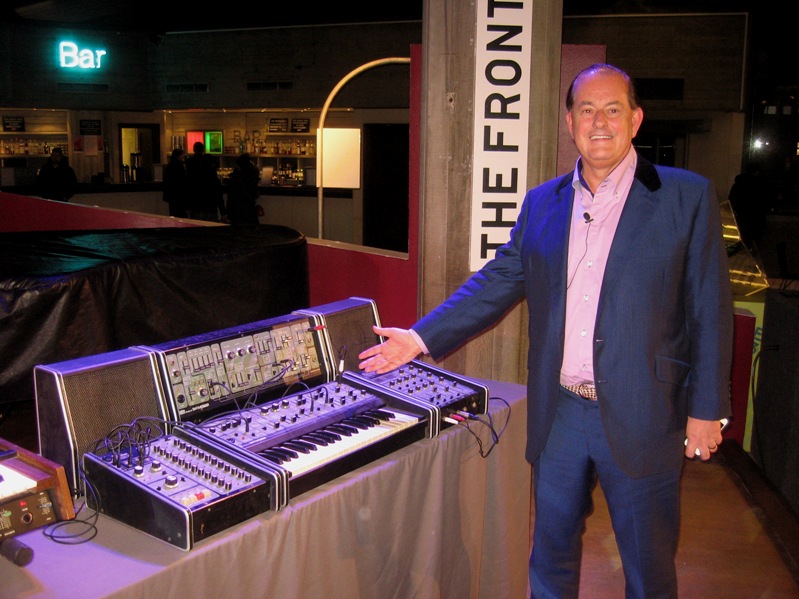
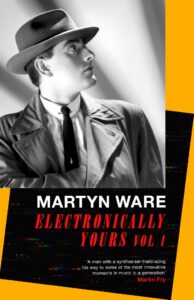
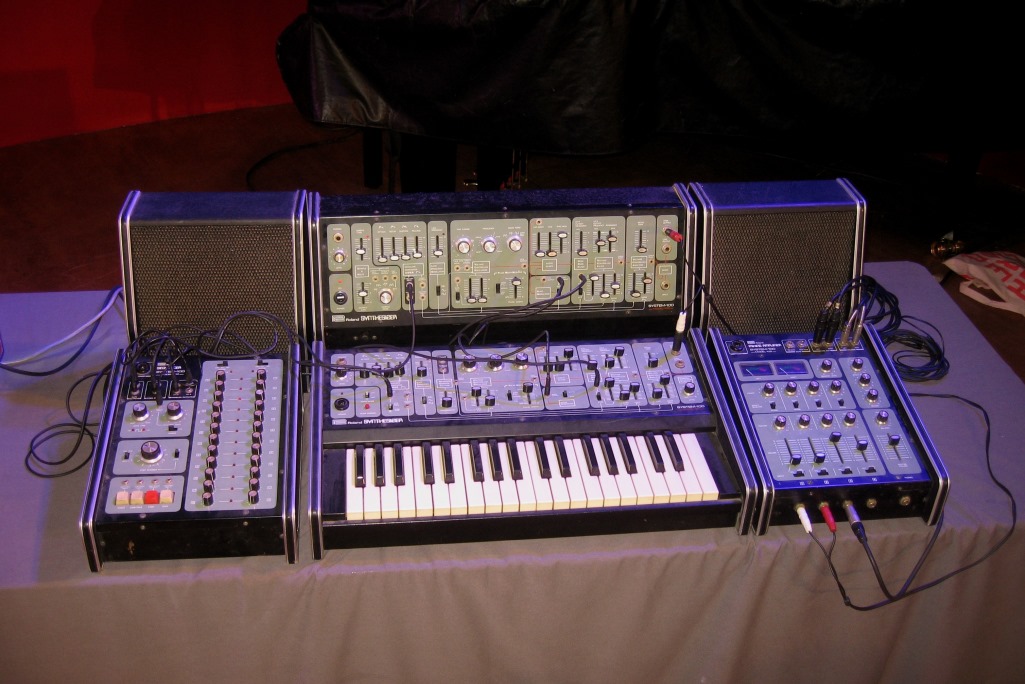
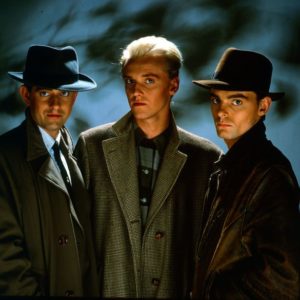
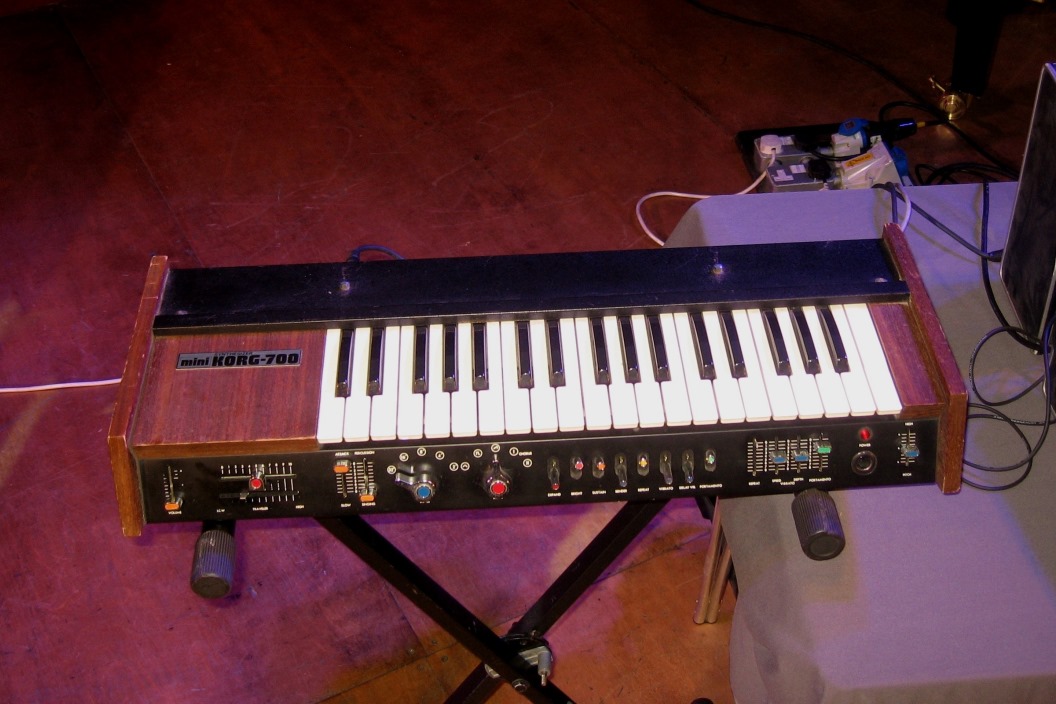
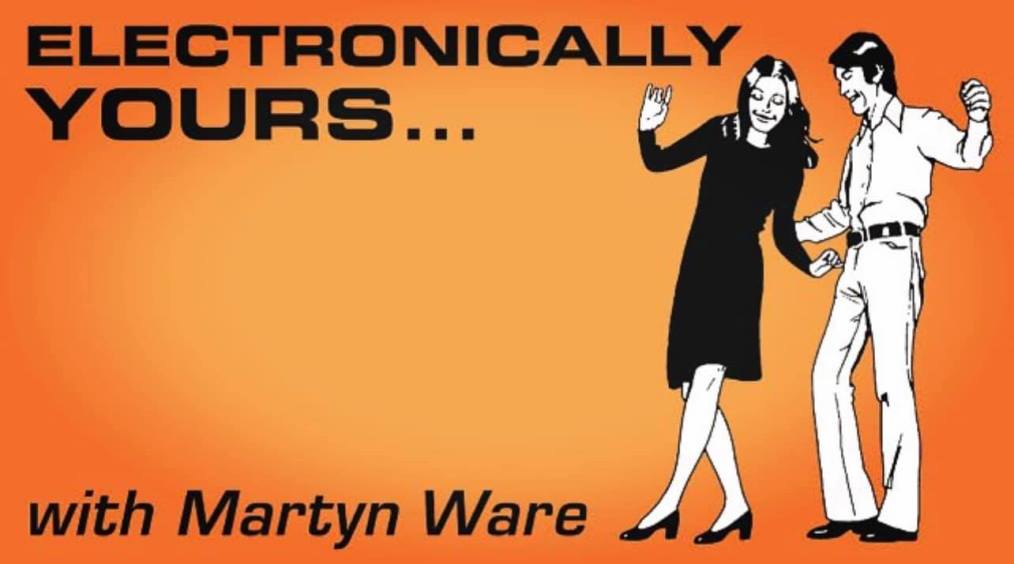
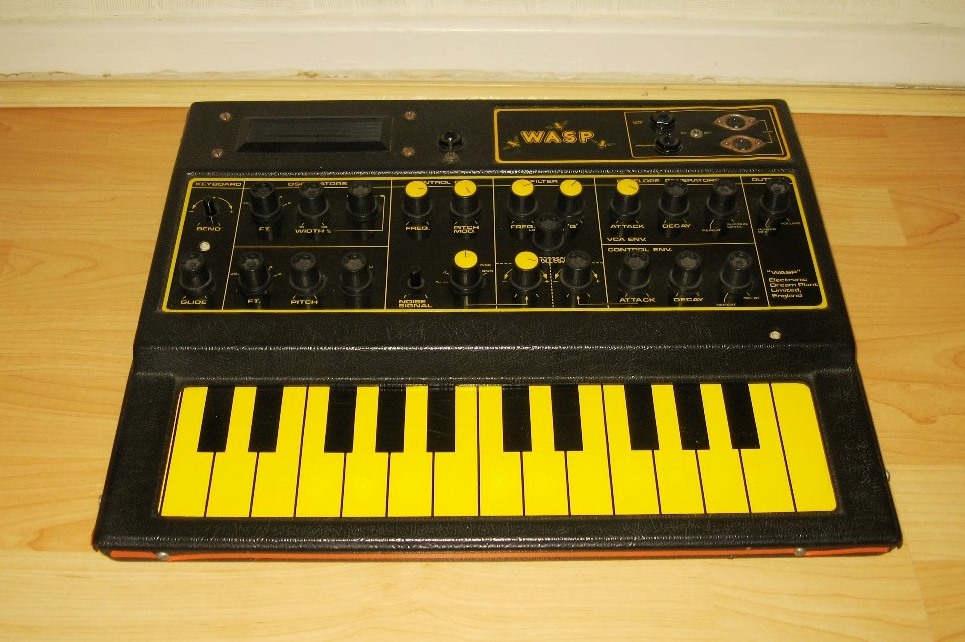
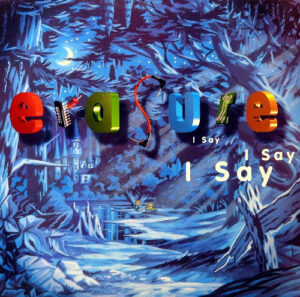
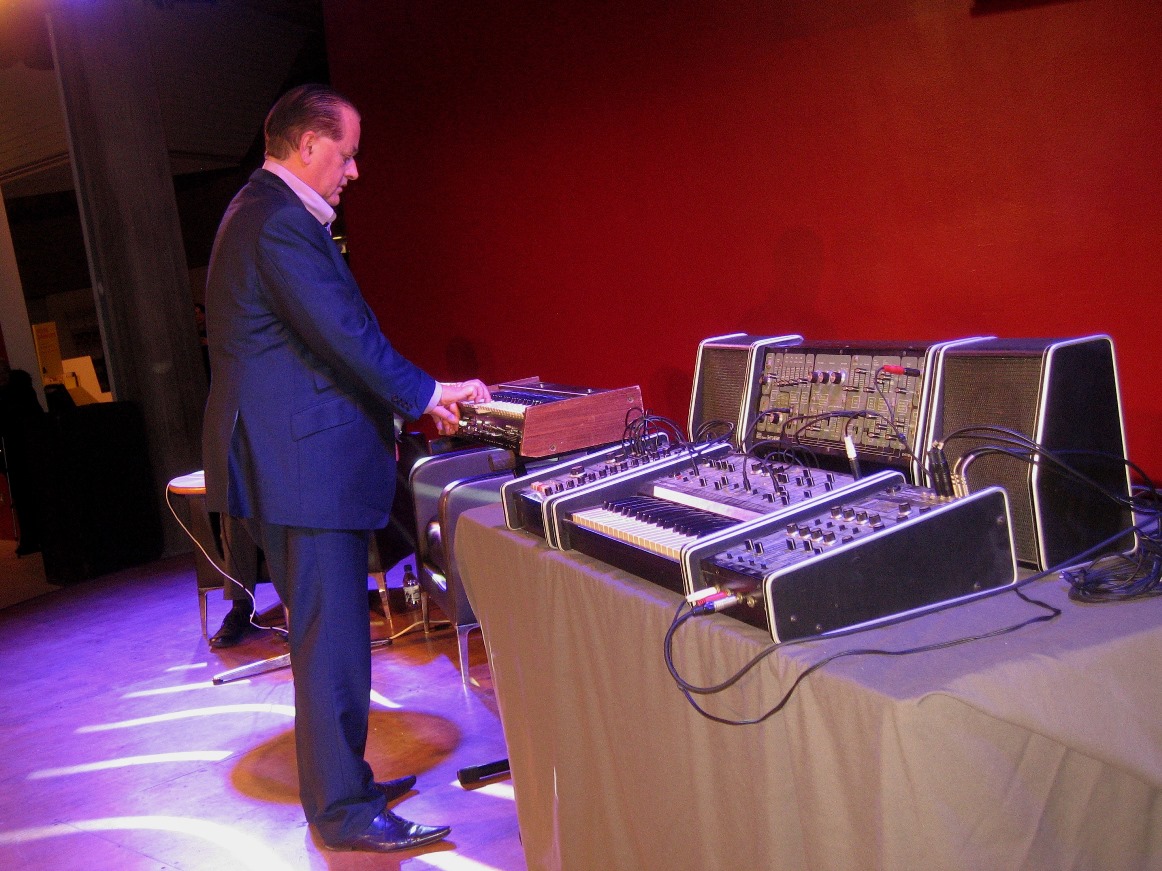
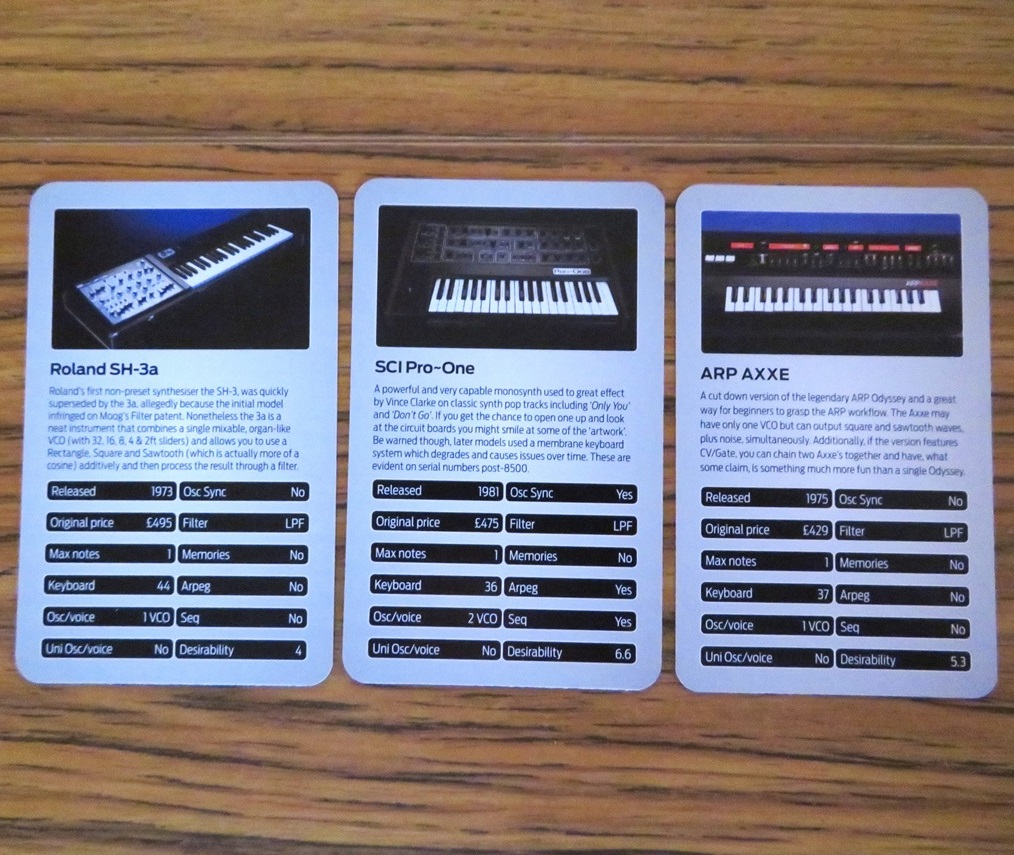
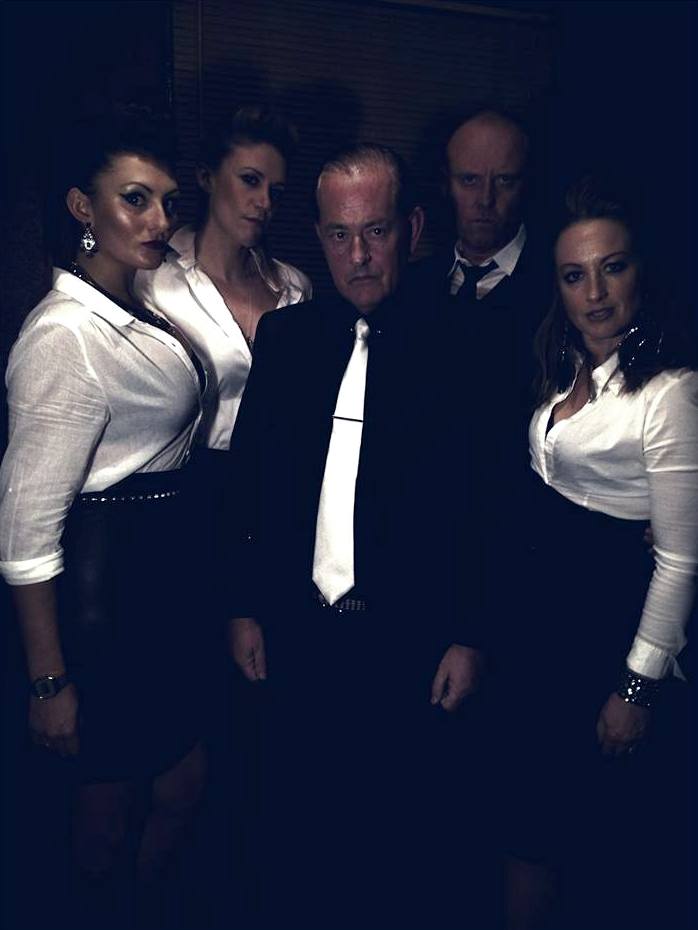
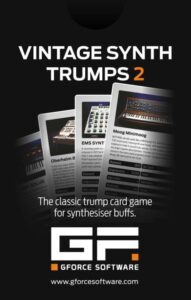
Follow Us!